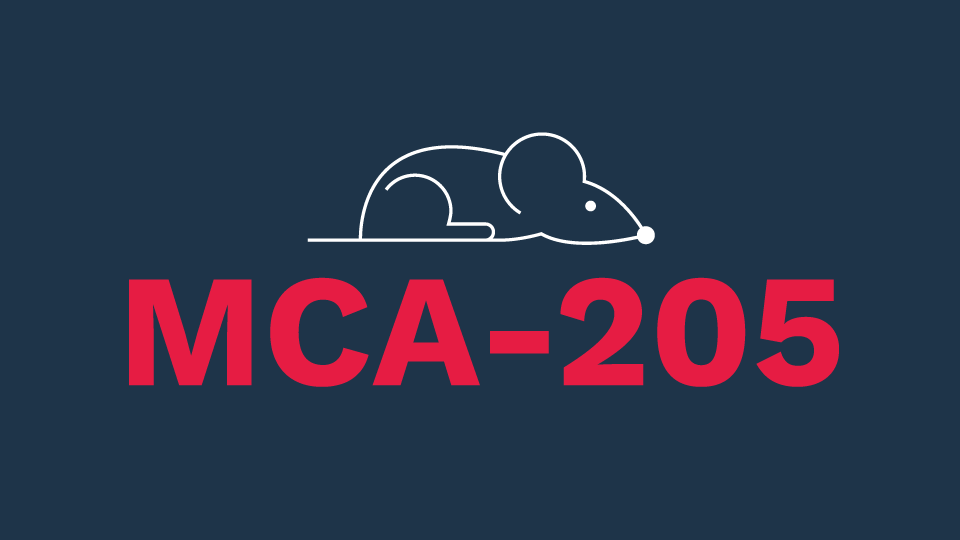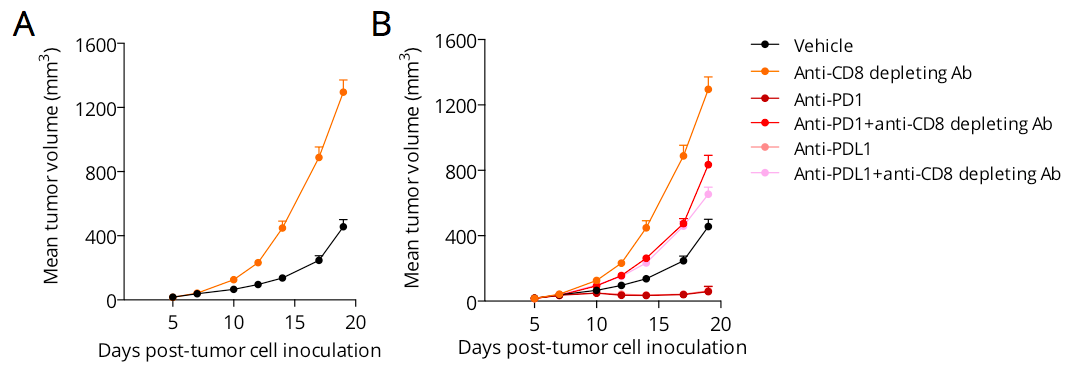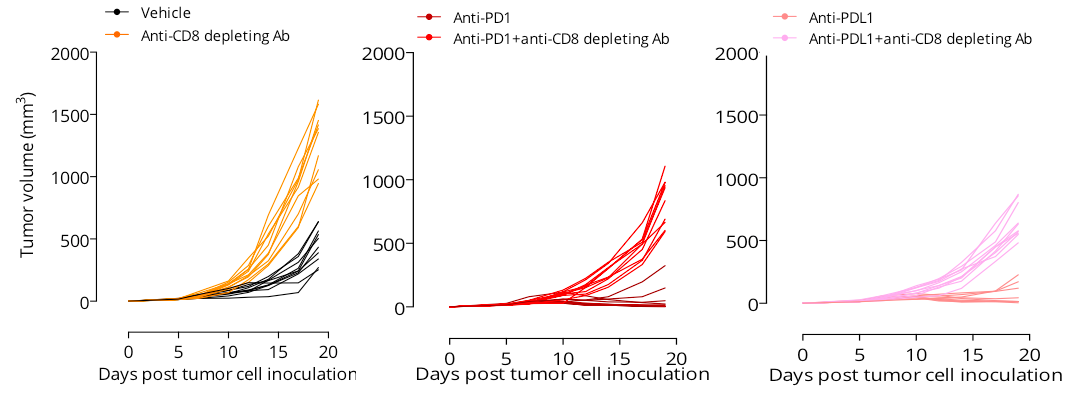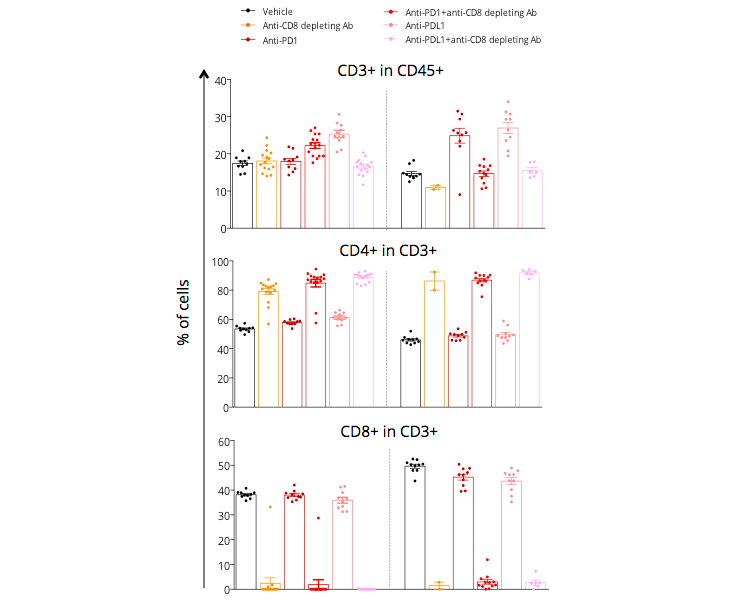Immunotherapy-based anti-cancer strategies such as immune checkpoint inhibitors promote antitumor immune response driven by the mobilization of effector immune cell activity and/or reversal of immunosuppressive mechanisms.
As case study presented here, we show that PD1 and PDL1 blockade promote strong antitumor effects in the syngeneic MCA205 sarcoma bearing tumor model, and that CD8 T cells play an unequivocal role in this antitumor activity.
Figure 1. Effects of CD8 depletion in vehicle and PD1/PDL1 blockade treated MCA205 tumor-bearing mice (5×105 cells). (A) CD8 depletion facilitated tumor outgrowth compared to control (isotype treated) group, thereby underlining the crucial role of CD8 T cells in mediating tumor growth control. (B & C) While PD1 and PDL1 blockade antibodies displayed a pronounced antitumor activity, their effects were completely reversed under CD8 depleting Ab treatment, showing that this antitumor activity is mainly CD8 T cell-driven.
Figure 2. Effects of CD8 depletion in vehicle and PD1/PDL1 blockade treated MCA205 tumor-bearing mice (Individual tumor growth). CD8 depletion facilitated tumor outgrowth (Individual tumor volume) compared to control (isotype-treated) group (Left panel). The effects of anti-PD1 (Middle panel) or anti-PDL1 (Right panel) were completely reversed under CD8 depleting Ab treatment, showing that this antitumor activity is mainly CD8 T cell-driven.
Figure 3. Peripheral blood FACS profiling supports the efficiency of CD8 depletion. Flow cytometry monitoring of CD3, CD4, and CD8 cell populations in peripheral blood samples, 1 day and 2 weeks after the 1st injection of CD8 depleting Ab. CD8 depleting Ab produced an efficient and stable CD8 depletion concomitantly with a higher proportion of CD4 T cells.
More about our preclinical services for immune profiling




